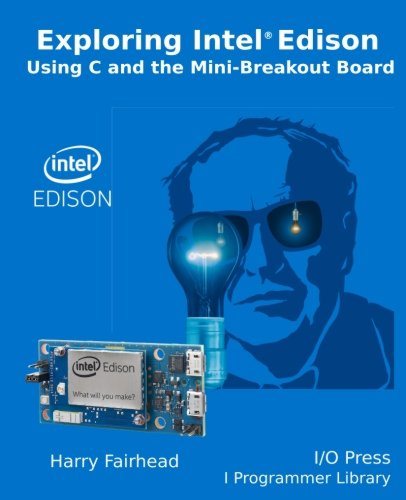| Exploring Intel Edison (I/O Press) |
| Thursday, 28 July 2016 | |||
|
With built-in support for WiFi, GPIO, I2C and SPI, the Intel Edison is a capable IoT device. However, to make use of its unique qualities and bring out its full power you have make use its native mode, which means using the mini-breakout board, dealing with the fact that it is a 1.8V logic device and programming it using C. Harry Fairhead explains how with detailed guidance and complete programs for working with several useful devices. <ASIN:1871962447> Author: Harry Fairhead Category: IoT; Electronics
Harry Fairhead starts with setting it up for the mini-breakout board. Then it looks at the advantages of choosing C as the language in which to program it, showing how to set up the Intel® System Studio IoT Edition IDE in preparation for building circuits and coding. Using the mraa library is the direct way to work with the GPIO lines and you need to master it before looking at ways of making things faster with memory-mapped I/O, achieving realtime facilities with Linux and using pulse width modulation. From here you are able to start connecting sensors - the HTU21D (I2C), DHT11/22 (custom) and the DS18B20 (1-wire). There are problems to overcome along the way – how to convert from 1.8V to work with higher voltages and how to support a 1-wire bus. The final circuit, to add AtoD, uses the SPI bus and implements a software emulation. The last chapter look beyond mraa with a Linux-based approach to working with GPIO lines and how to set the GPIO mode.
Visit Book Watch Archive for hundreds more titles. Subscribe to I Programmer's Books RSS feed
|

